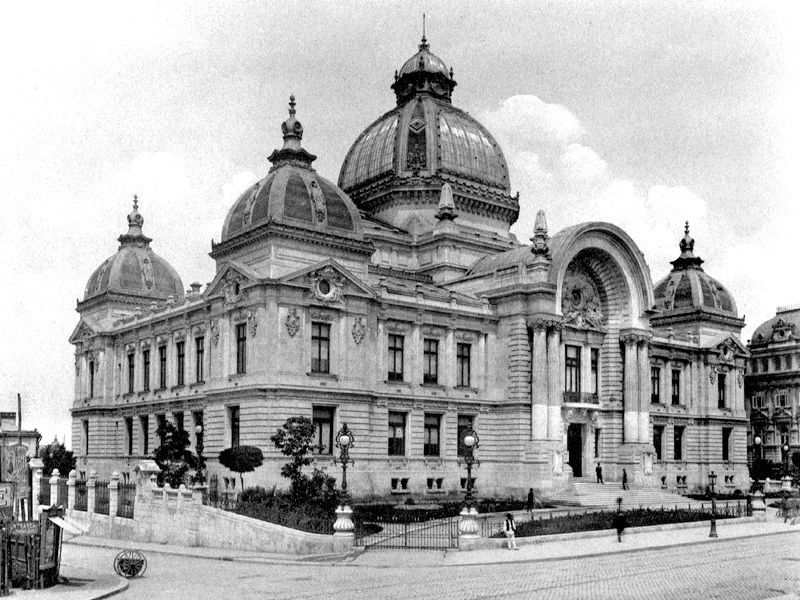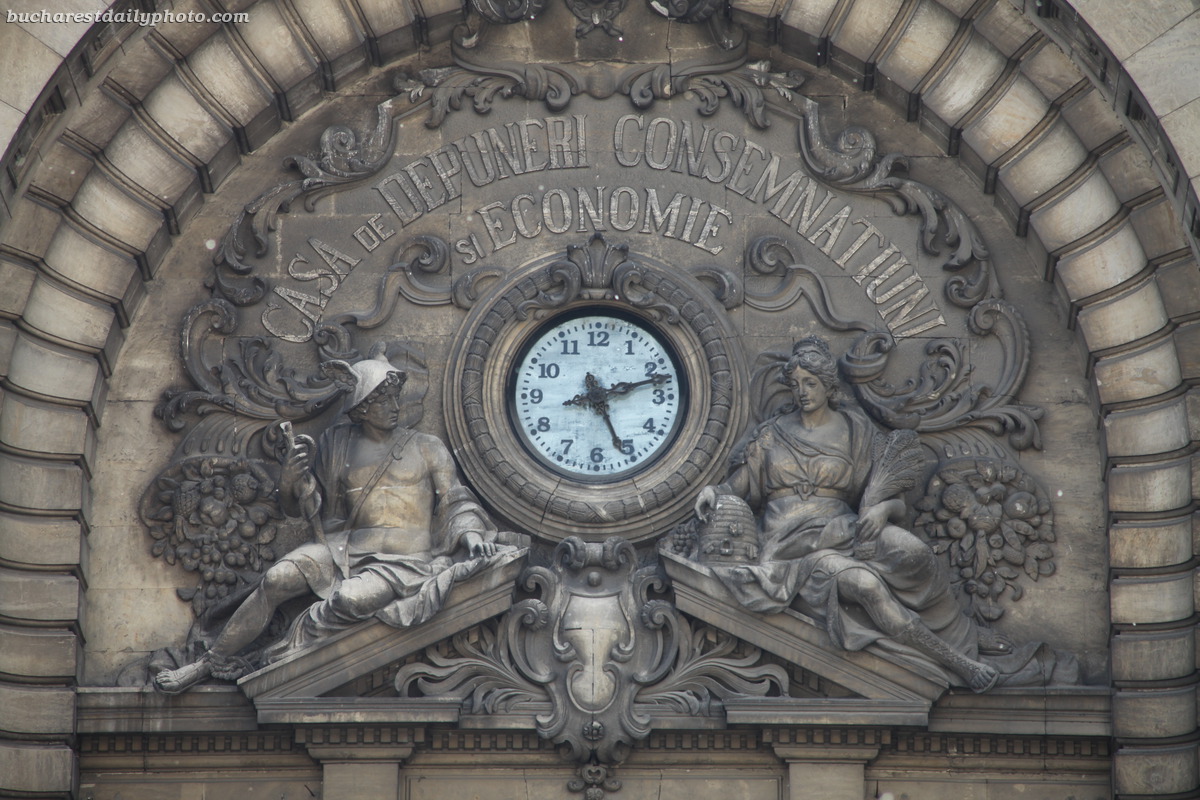
The CEC Palace in Bucharest, Romania,
built in 1900 and situated on Calea Victoriei opposite the National History
Museum, is the headquarters of the national savings house C.E.C.,
nowadays called CEC Bank. Housing both a museum and bank
headquarters, the Palace is open to the public and offers an excellent
glimpse of the architectural style of the early 20th century.
Before the erection of the palace, the spot
was occupied by the ruins of a monastery (Saint John the Great) and an
adjoining inn. The church, built in the 16th century, was renovated by
Constantin Brâncoveanu during 1702 - 1703, but later degraded and was
demolished in 1875.
The palace was built as a new headquarters
for the public savings institution known as C.E.C. ( Romanian: Casa de Economii şi
Consemnaţiuni), the oldest Romanian bank. The lands were bought and the
building built with the institutions's own funds. Work started on the
8th of June, 1897 and ended in 1900. The projects were designed by the
architect Paul Gottereau, a graduate of the School of Art in Paris,
while the construction was supervised by the Romanian architect Ion
Socolescu.
Built in eclectic style, the palace is topped by a glass and metal domemeant to provide the main hall inside with natural light. The monumental entrance is endowed with a huge semicircle fronton supported by two pairs of columns in
composite style. The four corners are decorated with gables and coats of
arms and ending in Renaissance domes.
The palace is said to feature one of the most solid bearing structures of all the buildings in Bucharest, which was confirmed by the minimal damages the building suffered during the 1977 earthquake, when the glass dome was the only element affected.
the C.E.C.
Palace is said to feature one of the most solid bearing structures of
all the buildings in Bucharest, a reputation put to test, amongst
others, during the 1977 earthquake, when the glass dome was the only
element affected, with little and insignificant damage to the rest of
the building. - See more at:
http://www.tourism-bucharest.com/bucharest-attractions/palaces-in-bucharest/cec-palace.html#sthash.DPJFVPlJ.dpuf
After 106 years of service, the building
was deemed no longer fit for modern banking and was therefore sold to
the municipality to be used as a museum, in exchange for 17.787 mil.
euro. Even if no longer open to CEC clients, the Palace remains rented
as bank headquarters until a new suitable building is found or built.


The CEC Palace, 1900

The palace nowadays
Night view
Interior view






Refinement in the smallest details...
Resources:
http://en.wikipedia.org/wiki/CEC_Palace
http://bucharestcitytour.ratb.ro/palatul_cec_eng.html
http://www.tourism-bucharest.com
http://www.comunicatemedia.ro/Detalii_arhitecturale_ale_Palatului_CEC-IDA-152-IDF-3531.html


No comments:
Post a Comment